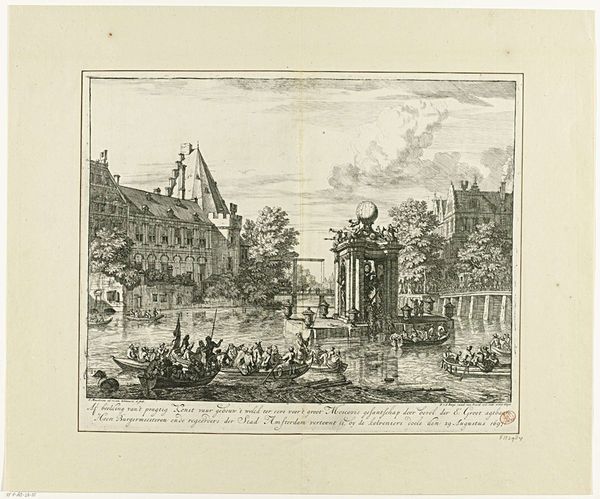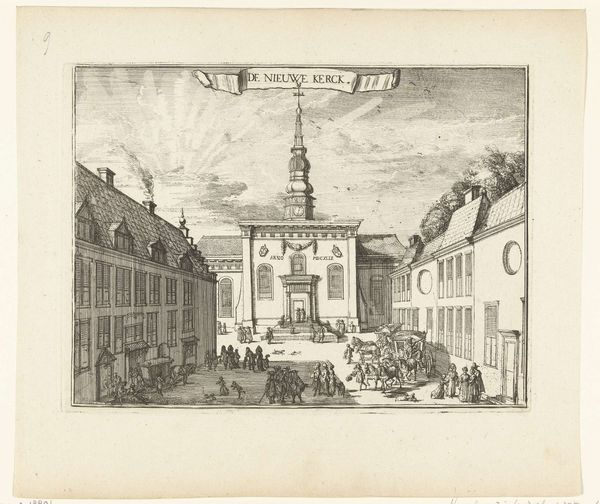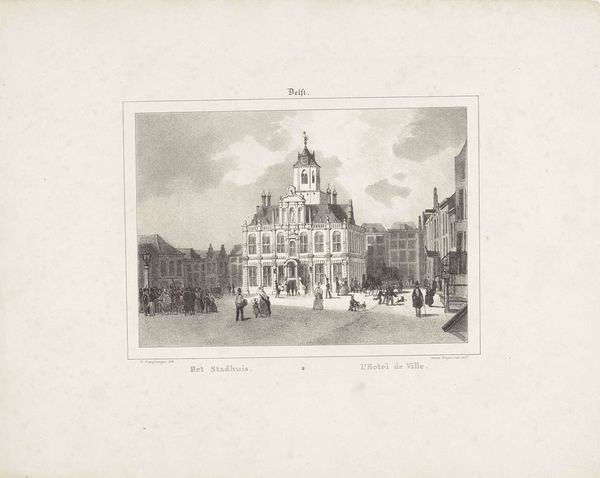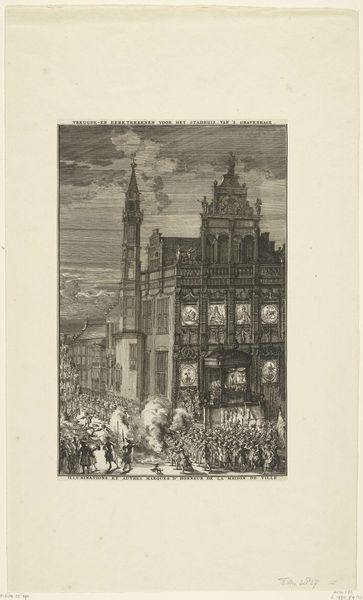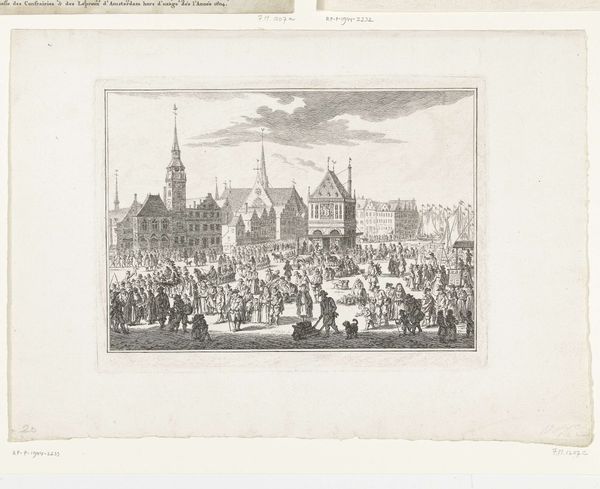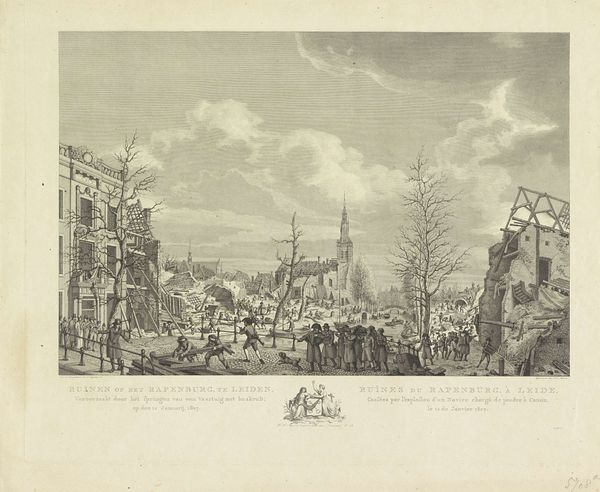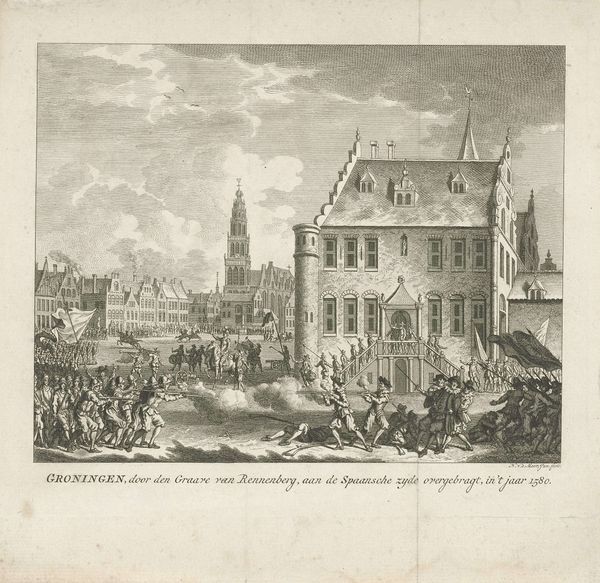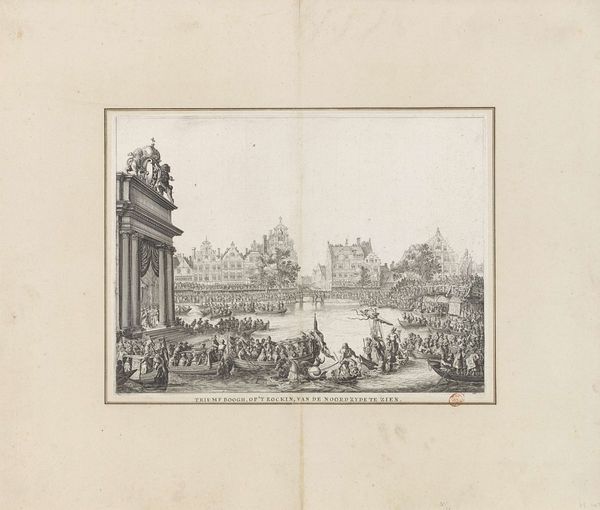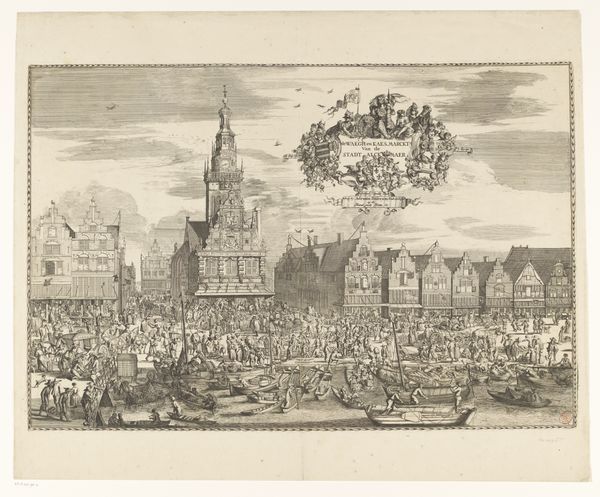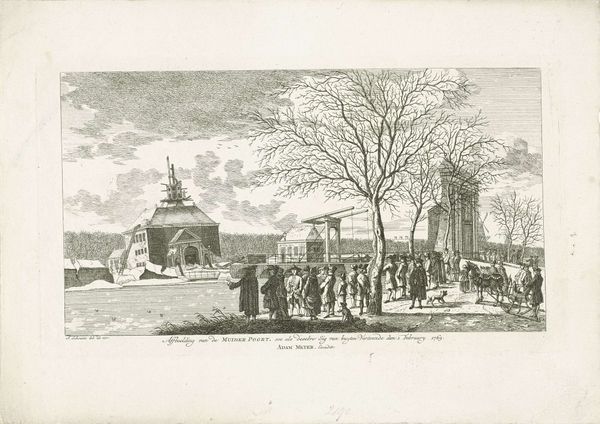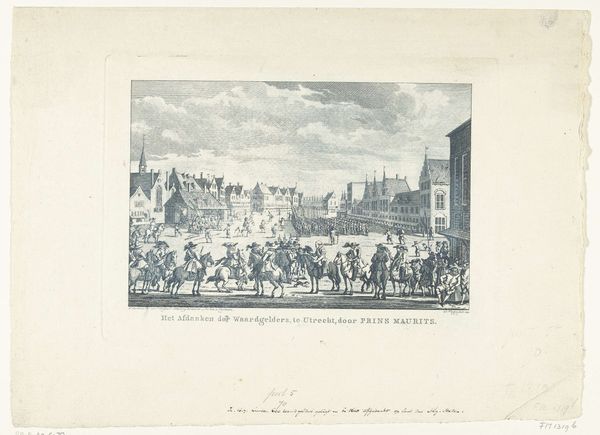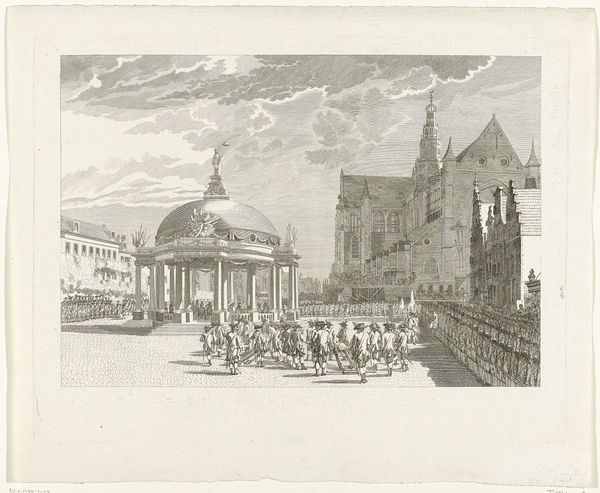
De komst van Z.M. Koning Willem II op het Raadhuis der stad Schiedam den 31 Julij 1846 1846
0:00
0:00
print, etching, engraving
# print
#
etching
#
old engraving style
#
romanticism
#
cityscape
#
genre-painting
#
engraving
#
realism
Dimensions: height 463 mm, width 555 mm
Copyright: Rijks Museum: Open Domain
Curator: Standing before us is an etching by Nicolaas Barnouw titled "De komst van Z.M. Koning Willem II op het Raadhuis der stad Schiedam den 31 Julij 1846," or "The Arrival of His Majesty King Willem II at the Town Hall of the City of Schiedam on July 31, 1846." It's a Romantic portrayal of a public event, showcasing a moment of civic pride. Editor: It's fascinating. The crisp detail gives it a sense of realism, but the way the crowd seems to swell and converge, it has an almost dreamlike quality. Like a cherished, embellished memory. Curator: Precisely. What is interesting from a historical standpoint, is considering the public's perception of the monarchy at that specific time and how prints like these were instruments of power for shaping opinion, reinforcing allegiance in newly formed nations like the Netherlands. This image would have circulated widely. Editor: The symbols reinforce that reading. Flags are draped everywhere and the Town Hall practically glows in the center, a clear invocation of national identity and civic virtue. Also, I see a distinct hierarchy implied in the architectural placement of royalty, as almost god-like, elevated by being placed inside the town hall. Curator: And note the realism employed to showcase local identity: buildings typical of Schiedam flank the space around the city's town hall square, providing spatial context for the king’s visit. A subtle promotion of local pride. Editor: I also noticed how the composition subtly guides the viewer's gaze upwards to King Willem II, positioned almost centrally within the open space of the town hall, as if illuminated by divine light. It evokes a sense of hope for the future. Curator: A meticulously constructed piece of propaganda, wouldn't you agree? An invitation to identify with the burgeoning sense of Dutch identity in 1846, presented via a reproducible, marketable format. Editor: Indeed. Through careful use of imagery and implied narratives, the artwork functions almost as a community mirror. Looking at the visual elements tells us a lot about power relationships at play and cultural values. Curator: Thank you for illuminating the symbolism inherent in this cityscape. Understanding this Romantic portrayal also requires attention to the specific historical contexts that generated such an image in the first place. Editor: It makes you wonder what values we choose to project, consciously or not, in the artworks of our own era.
Comments
No comments
Be the first to comment and join the conversation on the ultimate creative platform.

